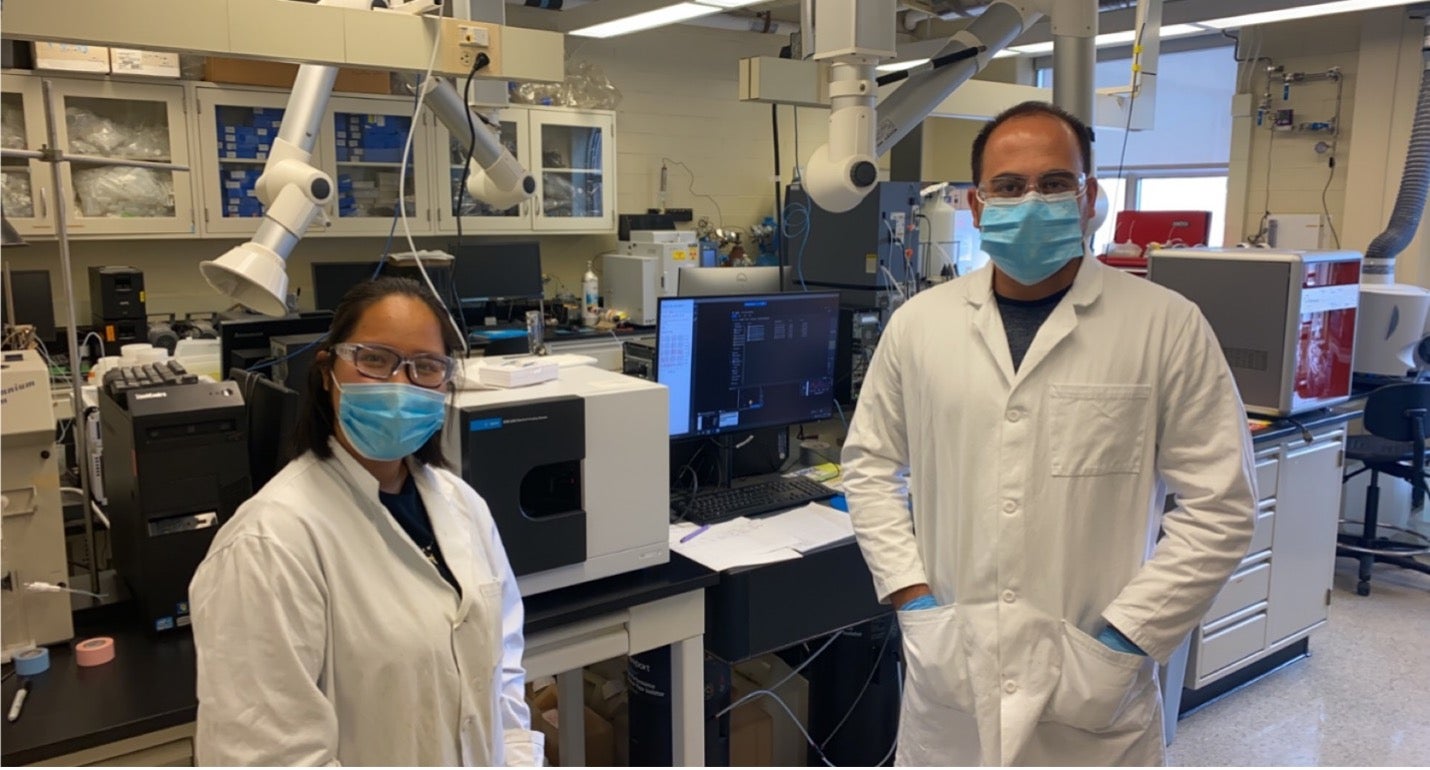
New LDIR Machine pictured between researchers, Hang Nguyen and Amir Reshadi.
By Shuhuan Li, Multi-Scale Environmental Particle Analysis Laboratory Coordinator
The Ecohydrology Research Group is excited to announce it has installed a new machine that is expected to help us more quickly identify microplastics. It’s called the Agilent 8700 Laser Direct Infrared Imaging System (LDIR).
One of the challenges associated with studying microplastics is that it can be very time-consuming and complicated to identify microplastic samples gathered from environmental sources. As a result, scientists are limited in the number of samples that they can process. Given that microplastics are now present everywhere in the environment, we need faster and more efficient methods of quantifying their abundance and type.
How LDIR Works
As a state-of-art instrument, LDIR provides rapid scans with its unique capability of neglecting non-particle sections. The LDIR utilizes a Quantum Cascade Laser (QCL), which is a semi-conductor-based laser. This means that electrons tunnel through a series of quantum wells and emit light, allowing it to be rapidly tuned through the wavenumber (λ-1) range (in this case, 1800 cm-1 to 975 cm-1). When combined with a single-point mercury cadmium telluride (MCT) detector and rapid scanning optics, two useful modes of action arise. In the first, the LDIR selects a single wavelength and scans through the objective as it moves over the sample at a very high speed. In the second mode, the objective is parked at a single point, while the QCL sweeps through the range, obtaining a full spectrum in less than one second.
How our project is utilizing the new technology
We are using both modes in the Microplastics Fingerprinting project. Using the first mode, we are able to rapidly scan the sample area to produce an IR image that can be used to locate particles, such as rubber, cellulose and plastic. We can also determine their size and shape. Once located, we can acquire a full spectrum for each particle and in real-time, compare it to a build-in microplastics spectral library. This lets us compare our sample’s spectrum to library spectrums that other researchers have chemically identified. Thus, we are able to quickly identify particles. We can even use this instrument to produce high resolution images of the samples.
We’ve already started using the machine to scan microplastic samples that were cleaned (i.e., separated from sediments). It took approximately 10 hours to analyze about 2000 particles and compare them to the spectra library. This is much quicker than our previous method, which would have taken about 400 hours for the same number of particles. With this new machine, we expect our lab to be much more efficient, which will hopefully allow us to increase the microplastic samples we are able to process during the lifetime of this project.
If you want to learn more about how we are using the new LDIR Machine, please contact Shuhuan Li, the Multi-Scale Environmental Particle Analysis Laboratory Coordinator.